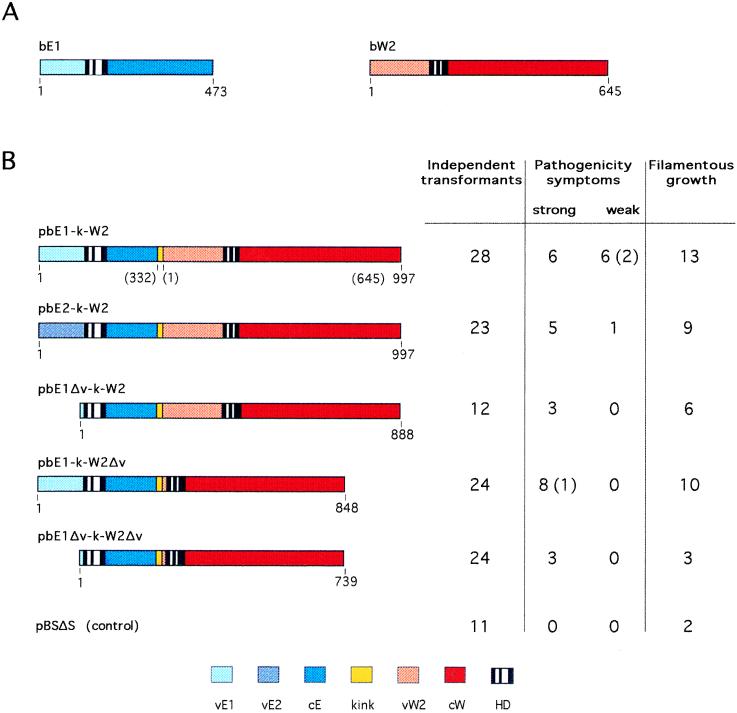Figure 1.
Pathogenicity and filamentous growth induced by single-chain fusions of bE and bW. (A) Schematic organization of the two unrelated homeodomain proteins bE and bW encoded by the b mating-type locus of U. maydis. Variable domain, homeodomain, and constant region of bE and bW are shown in different colors as indicated below. (B) Different single-chain fusions of bE and bW were created by linking the two homeodomain proteins via a flexible kink region of 20 amino acids (shown in yellow). Plasmids encoding the translational fusion proteins shown are listed. The proteins are drawn to scale; numbers indicate the protein size in amino acids; numbers in parentheses indicate corresponding amino acid positions of the bE and bW proteins from which the portions were derived. Plasmids carrying the chimeric genes were transformed in the U. maydis Δb-strain RK2176; expression of the fusion constructs is driven by the constitutive TEF promoter. Independent transformants (numbers are listed on the left in the table) were scored for inducing pathogenicity symptoms on young maize seedlings. Strong symptoms indicate that transformants were able to induce tumor formation and anthocyanin synthesis; in the case of weak symptoms transformants caused anthocyanin synthesis only. The number of transformants that displayed filamentous growth as assayed on charcoal plates (listed on the right in the table) is indicated. Numbers in parenthesis indicate that these transformants caused pathogenicity symptoms but grew yeast-like on plates. All other pathogenic transformants showed filamentous growth.

